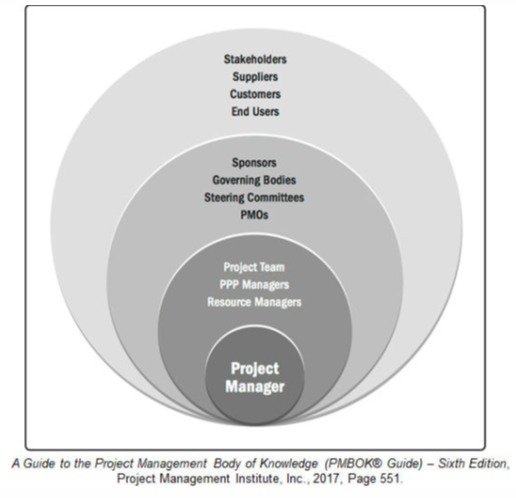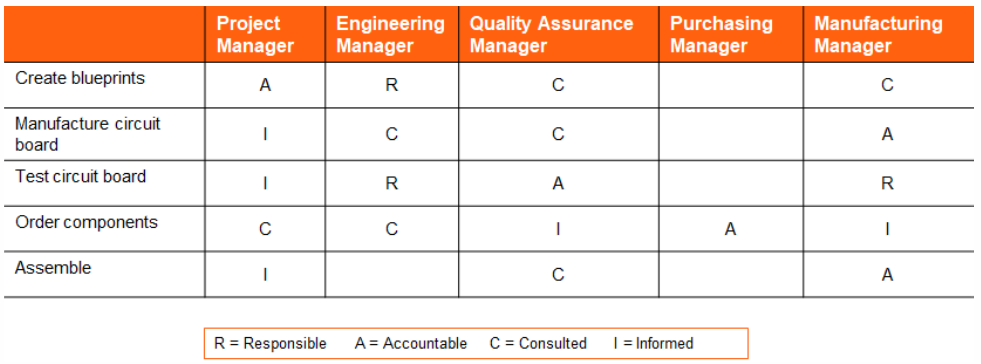Build a team
Enablers
- Support diversity and inclusion. (ECO 1.2.2)
- Appraise teams' skills. (ECO 1.6.1)
- Determine team member requirements. (ECO 1.6.2)
- Continuously assess and refresh team skills. (ECO 1.6.3)
- Maintain team knowledge and transfer. (ECO 1.6.4)
- Discuss responsibilities within teams. (ECO 2.16.1)
Deliverables, and Tools

Project Teams
A project team * is a set of individuals who support the project manager in performing the work of the project to achieve its objectives.
Project Resource Management includes:
- Estimate, acquire, and manage teams of people.
- Estimate the other resources those team members will need to carry out the work.
- Obtain the people.
- Develop the team, improve their competencies, facilitate interactions, and create an effective teaming environment.
- Track team performance, create and execute improvements based on feedback, resolve issues, and manage team personnel changes.
Project Team Member Requirements
Team Member Considerations:
- Need the relevant skill sets to perform the work and produce the desired results.
- Avoid single-points-of-failure caused by a single resource having a required skill.
- Use generalizing specialists who have a core competency and general skills that can be leveraged to support other areas of the project.
Other Considerations:
- Physical resources, such as equipment
- Access rights
Project Stakeholders
A stakeholder * is an individual, group, or organization that may affect, be affected by, or perceive itself to be affected by a decision, activity, or outcome of a project, program, or portfolio.

Stakeholder Identification
- Identifying stakeholders tends to happen as the project charter is being developed.
- List of identified stakeholders should be reviewed and modified as changes occur throughout the project.
- The project plans that are developed should describe stakeholders and the planned engagement model.
- As the project progresses, documents such as change logs, issue logs, or requirement documents can reveal additional stakeholders.
- The stakeholder list may be affected by organizational environment factors.
- Referring to stakeholder lists from previous projects might be useful.
Skills List
- Conflict management
- Cultural awareness
- Decision making
- Facilitation
- Leadership
- Meeting management
- Negotiation
- Networking
- Observation/conversation
- Servant leadership
- Team building
The RACI Chart
A RACI chart * is a common type of Responsibility Assignment Matrix (RAM) that uses responsible, accountable, consult, and inform statuses to define the involvement of stakeholders in project activities.

Team Skill Appraisal
Assessments of the team members and the team holistically enable the team to identify its strengths and weaknesses, and to help assess opportunities for improvement, build trust, and establish communications mechanisms. These may help to better identify:
- Team preferences
- Aspirations
- Information processing and organization
- Decision making processes
- Interactions with other team members
Pre-Assignment Tools
There are a number of tools and techniques to support skills appraisals. These may include:
- Attitudinal surveys
- Specific assessments
- Structured interviews
- Ability tests
- Focus groups
Diversity and Inclusion
Project teams are becoming more global and therefore more diverse:
- Cultural backgrounds
- Industry experiences
- Spoken language
Create an environment that takes advantage of the diversity and builds climate of mutual trust.
Team development objectives might include:
- Improving team knowledge and skills to reduce cost and time and improve quality.
- Improving trust to raise team morale, reduce conflict, and improve teamwork.
- Creating a collaborative culture to improve individual and team performance and facilitate cross-training and mentoring.
- Empowering the team to participate in decision making and own the solutions they create.
Resource Management Plan
Resource Management Plan * is a component of the project management plan that describes how project resources are acquired, allocated, monitored, and controlled.
- Identification of resources
- Acquisition of resources
- Roles and responsibilities
- Roles—The function of the person in the project.
- Authority—Rights to use resources, make decisions, accept deliverables, etc.
- Responsibility—Assigned duties to be performed.
- Competence—Skills and capacities required to complete the desired activities.
- Project Organization Chart—Defines the project team members and their reporting relationships.
- Team resource management —Guidance on the lifecycle of the team resources; how they are defined, staffed, managed, and eventually released.
- Training strategies and requirements.
- Team development methods to be used.
- Resource controls for the management of physical resources to support the team.
- Recognition Plan—How team members are rewarded and recognized.
Virtual Teams
Virtual teams * are defined as a group of people with a shared goal who fulfill their roles with little or no time spent meeting face-to-face.
- Creates opportunities for finding team members with greater skills, at lower costs, and allows a project to forego relocation expenses.
- Create challenges for managing communications and enabling effective team performance.
- Virtual team building considerations:
- Bonding and team identity may be hard to develop
- Various forms of technology used for discussion, calendar management, and Kanban boards and other information
- Difficult to monitor individual performance/progress
Project Responsibilities within the Team
Defining the responsibilities varies based on the team.
Identifying a suitable resource to perform a responsibility might be based on the following:
- Experience
- Knowledge
- Skills
- Attitude
- International factors
In an agile approach, self-organizing teams assess the work requirements and determine who will do the work.
In traditional project management approaches, use a work breakdown structure to assign work to team members.
Rates
The project manager is responsible for project budget and disbursements.
Resource requirements should be met using the most cost-effective resource based on:
- The needs of the project
- Resource availability
- Experience
- Knowledge
- Skills
- Attitude
- International factors
Resource Assignment
Project manager creates a project management plan that includes:
- Team members assigned to the project
- Their roles and responsibilities
- Project team directory
- Project organization charts
- Project schedules
Guidelines to Continuously Assess and Refresh Team Skills to Meet Project Needs
The project manager must have a certain level of awareness of the knowledge, skills, attributes, and experience needed by the project team to carry out the work and produce the project’s deliverables.
As the project progresses, the project team and the project manager should gain a better understanding of customer needs and team capabilities to identify gaps in the team’s skill set.
The project manager needs to coordinate frequent checks for these gaps, and identify appropriate mechanisms to close those gaps.
These may include:
- The identification of new resources needed.
- Training requirements to enable the team to develop the missing skill sets.
- Identification of knowledge gaps that require additional engagement with the customer to assess needs and modify plans and deliverables as needed.
A major project challenge is managing knowledge sharing among team members, especially on virtual teams.
- A core objective is to facilitate collaboration and promote visibility among the team.
- As part of developing a team charter, the team should determine methods for facilitating knowledge sharing, including frequency of updates, version control, and supporting tools and the team’s agreed approach to their utilization.
- Agile practices refer to these as information radiators, with the goal being to create more seamless visibility into project status across the stakeholder community.